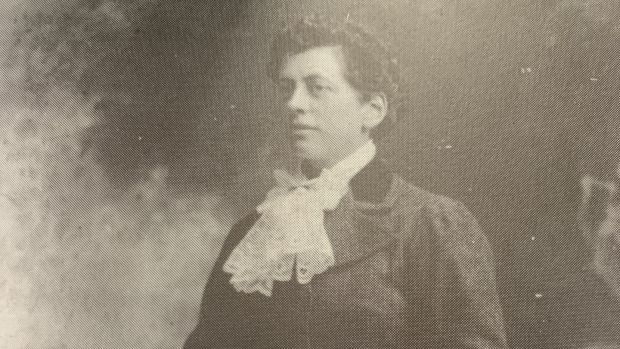Mary Hayden: Irish historian and feminist, 1862-1942
by Joyce Padbury (Arlen House, €25).
Felix M. Larkin
The older among us may remember the textbook A short history of the Irish people from the earliest times to 1920, by Mary Hayden and George A. Moonan. First published in 1921, it moulded the ideas of a generation and was still in use in the 1960s. One of the authors, Mary Hayden, is the subject of this fine biography by Joyce Padbury.
Born in 1862, Prof. Hayden was one of the foundation staff of University College Dublin (UCD) after its reconstitution as a college of the new National University of Ireland (NUI) under the Irish Universities Act (1908). Appointed professor of modern Irish history in UCD in 1911, she held that post until 1938 when she retired aged 76. She served on the governing body of UCD for 27 years, and was a member of the senate of the NUI from 1908 to 1924.
Prof. Hayden had graduated with a BA from the old Royal University – the antecedent of the NUI – in 1885, only the second year in which women were eligible to be awarded degrees from that institution. She went on to earn a MA in 1887. She taught at various women’s colleges in Dublin that prepared students for the Royal University examinations before she joined the staff of UCD, but she did not approve of separate education for men and women at third level – seeing it “as a denial of equal facilities and equal opportunity”, to quote Ms Padbury. She was one of a number of women scholars who campaigned for the inclusion of women on equal terms with men in university education; this was not conceded until the 1908 legislation.
Professorship
In the years of her professorship, history had a less prestigious ranking among the established disciplines than it has today. As Ms Padbury notes, it was regarded “as a division of literature, as art rather than science”. The professionalisation of the subject only began in Ireland with the launch of the journal Irish Historical Studies in 1938, the year in which Prof. Hayden retired. That journal was the initiative of two young historians: R. Dudley Edwards, who had been Prof. Hayden’s student and succeeded her in the chair of Modern Irish History in UCD, and T.W. Moody of Trinity College.
The aforementioned textbook jointly authored by Prof. Hayden and Mr Moonan – Prof. Hayden’s most notable work; she wrote most of it – would accordingly not be regarded as meeting today’s standard of historical scholarship. It is written (as both acknowledged) “from a frankly national standpoint”, and idealises the Irish past. Joe Lee has dismissed it as “vintage cowboy and Indian stuff”, but Ms Padbury argues that it does “not exhibit strong anti-British animosity” and instead presents English policy in Ireland “as ill-judged or ill-informed rather than deliberately malevolent”.
Nationalist
Prof. Hayden was a moderate nationalist in politics, a ‘Home Ruler’ up to the 1918 general election and later a supporter of the 1921 Anglo-Irish Treaty. Feminism was, however, more important to her than nationalism – and Ms Padbury faithfully records her involvement in women’s suffrage campaigns in the early twentieth century. This complemented her advocacy of equality in education for women. In 1937 she played a significant role in opposing Éamon de Valera’s new constitution, certain provisions of which were perceived to threaten women’s status in society and in the workplace. Those provisions were greatly influenced by Catholic social teaching at that time – Ms Padbury refers to a letter addressed to Mr de Valera by Fr John Charles McQuaid CSSp., then president of Blackrock College, in which he writes of “the law and fact of nature that women’s natural place is in the home”. This was anathema to Prof. Hayden. She was, nevertheless, an observant Catholic throughout her life – though Ms Padbury suggests that her religion was “more a matter of commitment than of strong conviction”.
This biography is handsomely produced by Arlen House, a publishing house which serves the cause of women’s studies in Ireland so well. The cover of the book features the portrait of Mary Hayden by Lily Williams that hangs in the UCD School of History – no longer located in the splendid building in Earlsfort Terrace that Prof. Hayden knew, but in the concrete jungle of Belfield.



